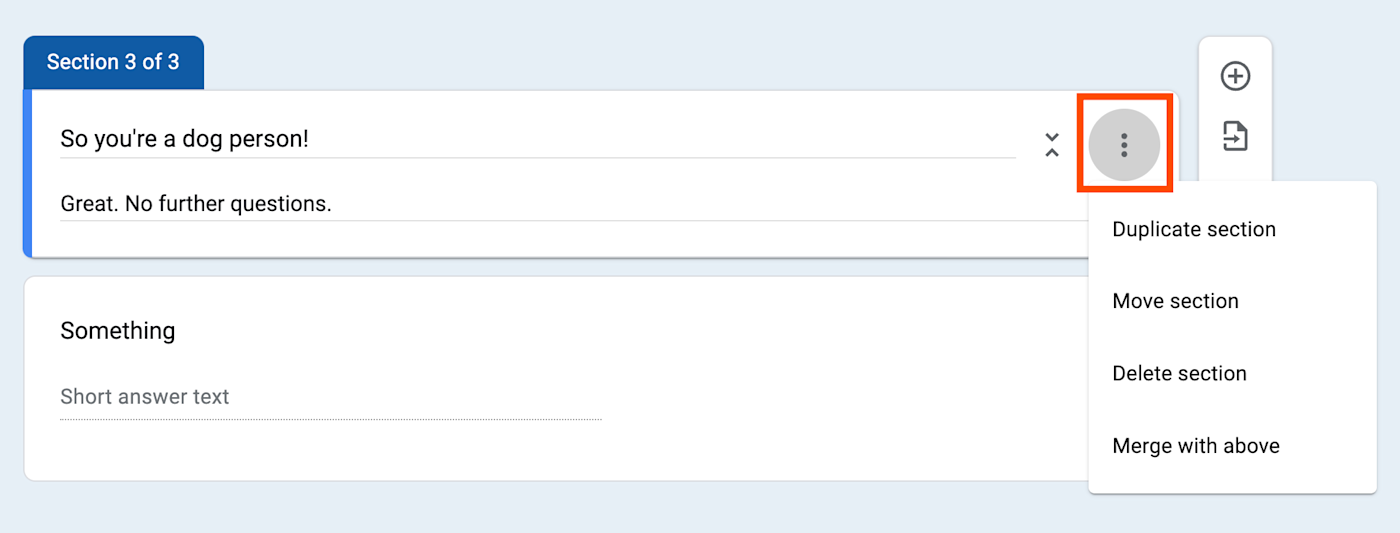

Google Forms is a simple-to-use form builder app, but there seems to be a perception that it's too simple. Which is unfortunate, because it's a pretty robust tool—if you know how to use it.
Make your forms work for youTo demonstrate how powerful Google Forms truly is, here are six settings to help you make the most of this app. By the end, you'll have everything you need to create a customer survey, registration form, and even a digital escape room.
Before you get started, head to docs.google.com/forms, so you can play around with each setting as we go.
For a more comprehensive overview of Google Forms, check out our Google Forms guide.
By default, Google Forms doesn't collect email addresses. This is useful because people don't need a Google account to fill out your form, and they can respond anonymously. The downside: you can't confirm who provided which answers, and people could, in theory, submit the form multiple times. But you can prevent this. Here's how.

It's worth mentioning that if Limit to 1 response is on, respondents will need to sign in to Google to submit the form. Unless you're absolutely certain that all of your customers are Google users, this feature is best reserved for internal usage instead of anything customer-facing.
Want to know which email address is connected to which form submission? In Settings, click the dropdown menu beside Collect email addresses. From here, you have two options for how to record respondents' email addresses:

You can turn any form into a multiple-choice quiz, allowing you to grade tests and quizzes automatically. To do this, select the Settings tab, and click the toggle beside Make this a quiz.

To streamline the feedback process, you can customize how grades are released (immediately or after a manual review), and let students see which questions they answered incorrectly along with the correct answers.
You can even let Google Forms take care of grading multiple-choice questions for you. For each question, click Answer key, and choose the correct answers. You can even add answer feedback to improve students' understanding.
You can also include short- or long-answer questions in a quiz. Depending on the complexity of your question, you can even automate the grading for this by adding the correct answers to your Answer key.

Tip: Looking for an effective way to enhance students' learning experience? Check out how a geology professor used Google Forms to enhance online learning by creating an elaborate scenario involving earthquakes, sheep, and a city in peril.
Google Forms, by default, is extremely purple. Maybe you love that, think it's perfect, and don't want to change it at all. Honestly, I respect that—purple is great. But if you want to change things up, here's how.



Tip: Want to create a form that really stands out? Here's everything you need to know to make the perfect Google Forms header image.
Want to spread your form across multiple pages to make it more manageable for the respondent? Or maybe you want certain questions to show up based on earlier answers. To do this, you'll need to create form sections and logic in Google Forms. Here's how.
To create a form section, click the Add section icon, which looks like an equal sign, from the question menu.

Changed your mind? In the question box, click the More icon ( ⋮ ). From here, you have a few options: Duplicate section, Move section, Delete section, or Merge with above.

To direct respondents to certain questions based on previous answers, click the More options icon ( ⋮ ), then choose Go to section based on answer. Next-step options will automatically appear beside each answer, which you can customize.

Tip: Need help creating form sections and adding logic to Google Forms? Check out our full tutorial for step-by-step instructions.
Google Forms offers pre-built templates for all kinds of common use cases, including customer feedback and event registration. To browse this collection, go to Google Forms, and then click Template gallery.

If you're using Google Workspace (formerly G Suite), you can also create and share templates that your entire company can use.
By default, Google Forms responses are stored in Google Forms itself. But if you'd rather save them in Google Sheets, it's really easy to do.


Just like that, all of your responses will be sent to a Google spreadsheet in your Google Drive.
Google Forms is a simple, no-fuss way of collecting feedback, creating quizzes, and more. But with Zapier, you can connect it to your other go-to apps, so you can automatically do things like:
And that's just a small sampling of what you can do with Google Forms and Zapier. Check out even more ways you can automate Google Forms.
Related reading:
This article was originally published in January 2021 by Justin Pot. The most recent update was in May 2023.
Get productivity tips delivered straight to your inbox
We’ll email you 1-3 times per week—and never share your information.

Jessica Lau is a senior content specialist at Zapier. Outside of writing, she likes to snuggle her dogs, and provide unsolicited podcast and book recommendations.